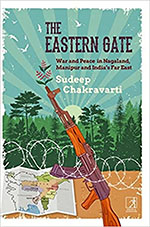Located in a remote corner of India and, regrettably, the minds of most ‘mainland’ Indians, the North Eastern region has never been an easy site and space to think of, let alone write about. Immensely complex in terms of geography (territory), history, immigration and ethnic composition, economics and politics, the North East, which Sudeep Chakravarti quite correctly rechristens as (India’s) Far East, emerged out of the subcontinental decolonization process, and in particular the Partition of India (Assam) in 1947 and independence of Burma (Myanmar) in 1948. Much like the British who never tired of complaining how difficult the region was to administer, the postcolonial Indian state and the bulk of its ‘mainland’ population too continued with that refrain—that the North East was not only unfathomable but also ungovernable in a regular, civil-democratic manner. As a result, the region, with its draconian AFSPA and all, turned into one of the most militarized zones of the world, featured as it came to be by a series of violent inter- and intra-tribal conflicts and communal (chauvinistic) movements since Independence. The latest book by Chakravarti yet again—his Highway 39: Journeys through a Fractured Land (2012) was also based on the North East—unravels the way the world is and functions beyond India’s Chicken’s Neck.

India’s Troubled Eastern Frontier
Nabanipa Bhattacharjee
THE EASTERN GATE: WAR AND PEACE IN NAGALAND, MANIPUR AND INDIA’S FAR EAST by Sudeep Chakravarti Simon & Schuster India, New Delhi, 2022, 399 pp., 899.00
April 2022, volume 46, No 4
